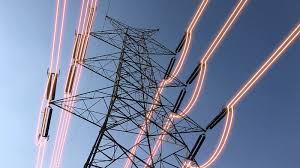Kenya has completed a major test of its ability to transmit 50 megawatts of electricity from Ethiopia to Tanzania through its national electricity grid. The successful trial is seen as a key milestone in the region’s goal of building an integrated electricity market under the Eastern Africa Power Pool (EAPP), which connects 13 countries in the region for cross-border energy trading.
The power was transmitted through the 400-kilovolt Suswa–Isinya transmission line, operated by the Kenya Electricity Transmission Company (KETRACO), a state-owned agency responsible for building and maintaining high-voltage infrastructure. During the trial, the power load on the line rose from 225 megawatts to 262 megawatts, marking a notable increase that demonstrated the system’s readiness to handle larger regional flows.
This development comes just months after Kenya experienced a major blackout in December 2024, which affected large parts of the country. The outage was later traced to a fault in the Kenya–Tanzania power interconnection system. Energy officials explained that the fault was due to instability on the cross-border corridor, a critical part of the EAPP framework. The corridor, which now connects Ethiopia to Tanzania via Kenya, has since undergone system improvements to strengthen grid stability.
The successful test shows that Kenya’s role as a power transit country is becoming more secure. It also signals that the investments made in the region’s energy infrastructure are beginning to pay off. The Ethiopia–Kenya–Tanzania power transmission path is now one of the most strategic routes for electricity trading in East Africa. Experts say the corridor will help improve access to reliable electricity in the region while also reducing power shortages in countries with weaker supply networks.
The construction of the transmission lines and related infrastructure was supported by multiple development partners. These include the World Bank, African Development Bank (AfDB), French Development Agency (AFD), and the European Investment Bank (EIB), alongside funding from Kenya’s National Treasury. These partners have been instrumental in financing energy infrastructure meant to boost economic growth and regional cooperation.
Energy Cabinet Secretary Opiyo Wandayi has acknowledged that regional interconnection has made Kenya’s national power grid more complex and sensitive to disturbances. However, he noted that the frequency of power outages has dropped as engineers have improved grid management. Wandayi added that a previous blackout in September 2024 was linked to a fault at the Suswa substation, which is a key node connected to Ethiopia through a high-capacity 500-kilovolt line.
Currently, Kenya imports about 200 megawatts of power from Ethiopia. This electricity comes largely from hydroelectric plants, making it a clean and renewable energy source. As the regional grid becomes more reliable, Kenya is also expected to begin earning money from transit fees by allowing power to pass through its territory on its way to other countries like Tanzania and possibly Zambia.
The Kenya–Tanzania interconnector reaches Arusha and is part of a wider plan to eventually connect with Zambia’s power grid. This would bridge the energy systems of East and Southern Africa, allowing more countries to trade electricity and reduce reliance on diesel generators and expensive emergency supply sources.
The successful electricity flow from Ethiopia to Tanzania also supports Kenya’s broader energy goals, which include being a regional energy hub. It strengthens Nairobi’s position as a key player in regional energy trade and opens new opportunities for investment in the power sector.
Experts believe the region is on the right path towards building a stable and reliable energy market. With continued support from development partners and effective coordination among countries, the Eastern Africa Power Pool could transform how electricity is accessed and distributed across the region.
